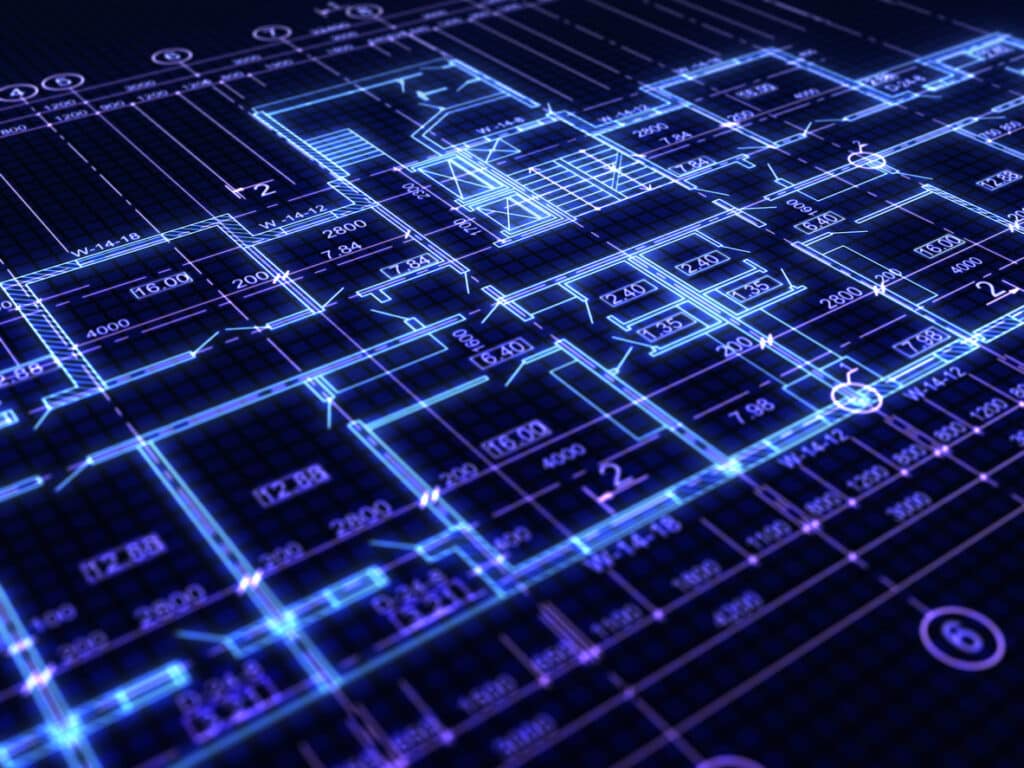
Environmental design increases safety
Commercial construction’s secret safety weapon
Landscaping. Lighting. Flooring and pavement. Colors. Upon entering a commercial building, you might make note of one or two of these, or you might, like some people, give them little attention at all, noticing only how a building makes you feel. But environmental design can do much more for your next commercial build or multifamily housing project than just look good. These days, keen environmental design can actually help keep your workers and customers safer.
Here’s how environmental design can improve safety
Improved staff and client safety through design might seem an incredible concept at first, but the fact is that design-build firms have been employing environmental design for years as a way to modify human behavior and tendencies, encourage improved adherence to safety protocols and even deter crime. Here’s how.
Shaping human habits and behaviors through intentional design
Most of us are unaware of environmental design’s role in our habits, choices and behaviors. But architects, interior designers and marketers have long understood the power of design. Colors can play a role in mood and impulse as well as wayfinding. Lighting and pathway design can influence foot traffic. Physical barriers such as those created by landscaping can serve as visual cues, drawing the eye toward what an owner wants noticed, or away from something they would rather conceal. Likewise, open spaces can increase the visibility of activity in your surroundings.
One approach, Crime Prevention Through Environmental Design (CPTED), leverages strategies that influence both the natural environment and construction to reduce crime while building a sense of community among residents. CPTED, which has existed for more than 60 years, improves safety in several ways.
- Natural surveillance and citizen participation, which can be improved through lighting and general visibility. Think of how safe you might feel in a dark, urban park filled with trees and bushes at night versus a well-lit courtyard where you and others can easily see what’s happening around you. Criminal behavior tends to be less appealing in properties that are visible with minimal obstructions of view, used by many people, and well-lit.
- Natural access control uses landscaping, pavement, signage and other design techniques to guide people to the appropriate entry. Anyone who has struggled to find the entryway to a building knows the importance of this strategy. Design techniques can guide people to where they need to go in a seamless and aesthetically pleasing manner. These design techniques can also create an atmosphere where it’s easy to identify people who are in a place they shouldn’t be or behave suspiciously.
- Territorial reinforcement is design that clearly differentiates spaces for appropriate use, particularly between public and private property. This is typically a visual representation of separation, such as a fence or border, clearly showing where the public should and should not be.
- Maintenance underscores the importance of keeping up your property to discourage further damage and minimize safety risks. This includes maintaining the landscaping to preserve natural surveillance, replacing lighting that doesn’t work, repairing broken windows, doors and other features, and general ongoing upkeep.
Additional safety features that can be considered in the architectural design phase include incorporating alarms, security cameras and other surveillance. In addition, you may consider designing for public health — in light of our recent pandemic — such as hygiene stations and ventilation measures to keep staff and customers safe from viral spread.
Design-build holds the key to environmental design for safety
Whether you’re building senior housing, multifamily housing, an office building or even a hospital, great environmental design starts with a great team. Working with a knowledgeable design and build firm can ensure your next commercial build or remodel takes advantage of every opportunity to improve safety for customers and clients and deter crime.
That’s because with the design-build construction model, everyone working on your project is on the same team. The result: from architectural design through project completion, everyone working on your commercial construction project keeps your core objectives in mind. Streamlined construction timelines and fewer change orders are added bonuses. Contact us to learn more about how the design and build construction model can help you build for improved safety.